Spot Animals At the Nagarjunasagar Wildlife Sanctuary In Andhra Pradesh In 2026
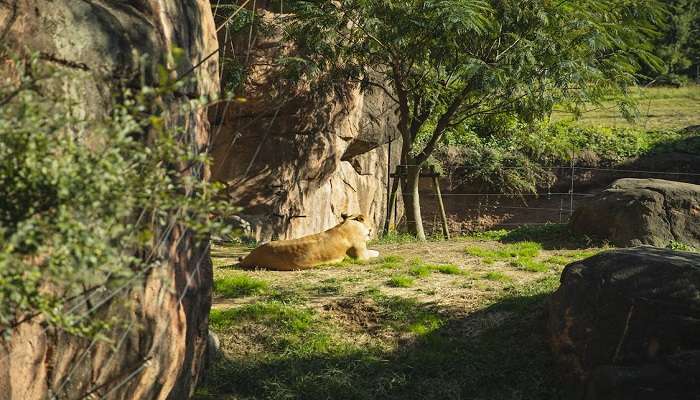
Andhra Pradesh boasts numerous wildlife sanctuaries, each offering a glimpse into diverse natural beauty. One of the most notable is the Nagarjunasagar Wildlife Sanctuary, spanning Andhra Pradesh and Telangana. It is a haven for nature lovers and wildlife enthusiasts. The reserve is situated in Srisailam and covers an impressive 3,568 square kilometres, encompassing parts of five districts: Kurnool, Prakasam, Nalgonda, Mahabubnagar, and Guntur. It is a perfect destination for nature lovers to experience the beauty and wildlife diversity of the region firsthand. Read the article to learn more about it!
About Nagarjunasagar Wildlife Sanctuary
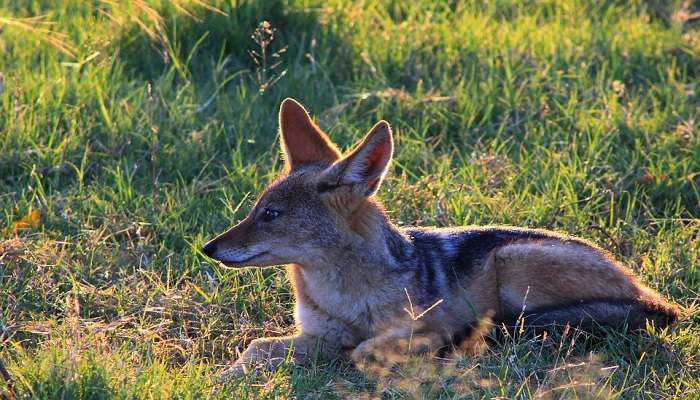
The Nagarjunasagar Wildlife Sanctuary, also known as Nagarjunasagar-Srisailam Tiger Sanctuary, was officially established in 1978 and recognised by Project Tiger in 1983. In 1992, it was renamed the Rajiv Gandhi Wildlife Sanctuary. This reserve is known for its stunning natural beauty. It has tall hills, echoing valleys, winding roads, and rivers that flow all year round.
It is home to a variety of species, including langurs, jackals, and macaques. Bird watchers can delight in spotting around 150 bird species, such as the grey hornbill and peafowl. Reptile enthusiasts will also find plenty to observe, with monitor lizards, pythons, soft-shelled turtles, and marsh crocodiles residing here.
A key highlight of the reserve is the mighty River Krishna, which originates in the Sahyadri Hills and flows through Maharashtra and Karnataka before traversing the Nallamala Tiger Reserve. This river, along with the diverse and dramatic terrain, makes the sanctuary a true paradise for wildlife and nature enthusiasts.
Must Read: Prakasam Barrage Vijayawada
Things To Do At Nagarjunasagar Wildlife Sanctuary
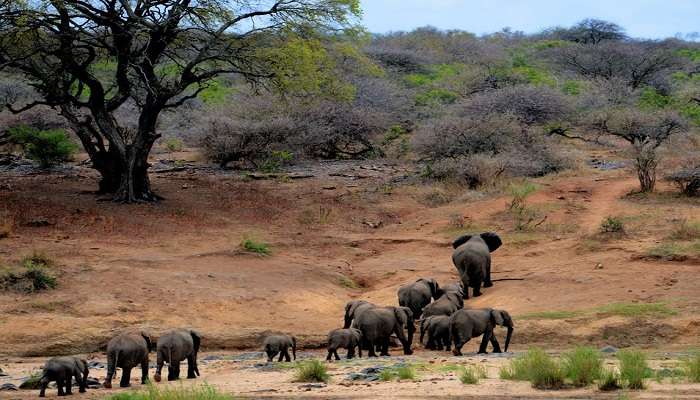
Nagarjunsagar-Srisailam Tiger Reserve is a vast sanctuary located in Andhra Pradesh and Telangana, famous for its beautiful landscapes and diverse wildlife. Visitors can explore dense forests, encounter various animals, and enjoy the peaceful surroundings. Whether you want an adventure, relax amidst greenery, or learn more about the culture, this reserve offers a memorable experience.
Explore the Flora and Fauna: Wander through the southern tropical dry mixed deciduous forest, Hardwickia forest, and southern thorn forest. Discover the rich flora, including shrubs, bamboo thickets, and trees such as Cleistanthus collinus, Terminalia species, and Tectona grandis.
Adventure with Jeep Safaris: Riding on the Jeep safari presents the chance to glimpse a diverse array of wildlife species. Keep your eyes open for the majestic Bengal tigers, known for their elusive nature within these forests.
Witness Mesmerising Monsoon Waterfalls: The Krishna River, one of the oldest in India, flows 130 kilometres through the reserve. During the monsoon season, it transforms into a mesmerising spectacle with stunning waterfalls and scenic views, offering a visual treat for visitors.
Discover Ancient Caves: These caves hold immense religious significance and are mentioned in various ancient texts. Popular cave temples in the area include Dattatreya Bhilam, Kadalivanam, Palankasari, Akka Mahadevi Bhilam, and Umaa Maheshwaram. Many of these temples are accessible only by trekking, attracting both devotees and adventure enthusiasts.
View the Remains of the Buddhist Town: Long before the reserve became a haven for animals, it was the ancient Buddhist town of Nagarjuna Viswa Vidyalayam, guided by the Buddhist scholar Nagarjuna in 150 A.D. Though the city has long since faded, its legacy remains alive among the ruins.
Enjoy Sightseeing: The reserve offers a captivating landscape of echoing valleys, winding roads, and perennial rivers. Each element of the scenery adds to its charm and natural beauty. The towering hills provide a dramatic backdrop, creating a sense of awe and grandeur. These hills are often shrouded in mist, especially during the early mornings and late afternoons.
Opening Hours And Entry Fees
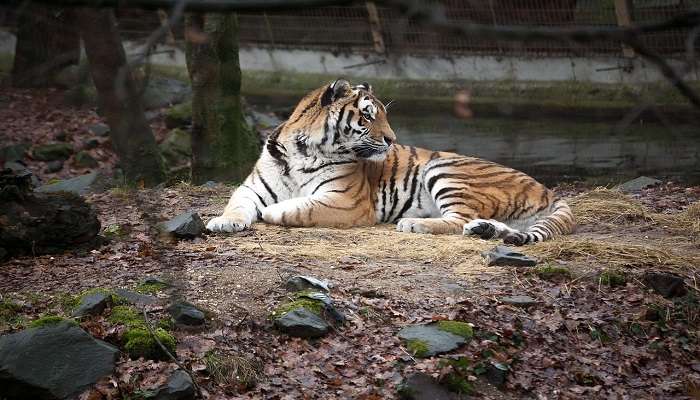
The sanctuary is open to visitors every day from 6 AM to 6 PM, except on Tuesdays. The entry fee is Rs. 20 per person, making it an affordable destination.
Consider taking a Jeep safari, which is available for Rs. 300 per person. The trip lasts about 2 hours and offers a unique opportunity to explore the deeper parts of the sanctuary. The safari operates in two shifts: from 7 AM to 10 AM and from 3 PM to 6 PM. These timings are ideal for wildlife sightings, as animals are most active during that time.
Suggested Read: Wildlife Sanctuaries Near Hyderabad
Best Time To Visit Nagarjunasagar Wildlife Sanctuary
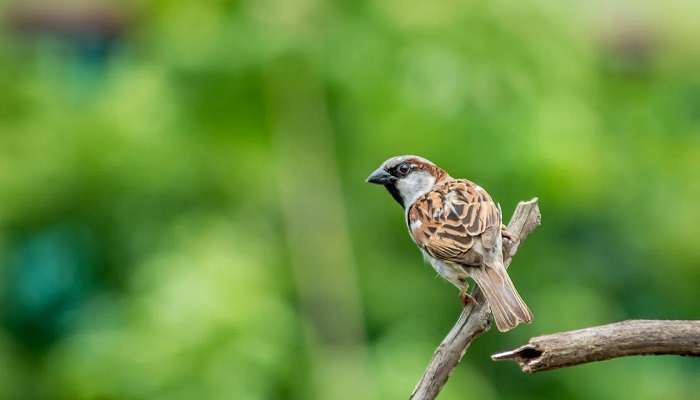
The best time to visit the Nagarjunasagar-Srisailam Sanctuary is from October to March. During this period, temperatures range from 15°C to 30°C, making it ideal for sightseeing and outdoor activities.
The monsoon season also offers a beautiful experience with greenery and waterfalls due to the rainfall. Meanwhile, from April to May, the summer months are the least favourable for visiting the sanctuary, as water levels may be low and temperatures can reach up to 45°C.
How To Reach

Nagarjunasagar Srisailam Tiger Reserve is just 30 kilometres from Srisailam town. It is easily accessible thanks to excellent connectivity with nearby regions.
By Air: The nearest airport to Srisailam is in Hyderabad, about 195 km away. Buses connect Srisailam with Hyderabad, Vijayawada, Guntur, and Kurnool. If you hire a private taxi, ensure the driver is experienced in driving through ghat sections.
By Road: Buses operate to and from Srisailam daily, both day and night, from places like Nellore and Visakhapatnam. If you take a bus from Hyderabad, the journey will take approximately 6 hours. Shared taxis and cabs are also available for these routes.
By Rail: There is no rail connectivity to Srisailam. The nearest railway stations are Marakpur (62 km), Vinukonda (120 km), and Kurnool (190 km). The closest major station is in the Cumbum district, about 60 km away, where you can find regular passenger and express trains to Srisailam.
Suggested Read: Oravakallu Rock Garden
Tips To Know Before Visiting The Nagarjunasagar Wildlife Sanctuary
Each sanctuary follows its rules to ensure both the safety and the conservation of wildlife. While guidelines may vary, there are universal principles you should adhere to for an exciting and safe experience:
- Consider opting for guided tours or safaris led by experts to get insights into the flora, fauna, and conservation efforts.
- Be prepared for varying weather conditions. Carry appropriate clothing layers, sunscreen, and insect repellent, especially during outdoor activities.
- No vehicles are allowed within the sanctuary between 9:00 PM and 6:00 AM.
- Observe wildlife from a safe distance and avoid making loud noises.
- Practice responsible tourism by disposing of waste and minimising your environmental impact. Stick to designated trails to preserve the natural beauty.
- Carry necessary medications and keep your mobile phone charged.
Further Read: Gowthami Ghat Rajahmundry
Nagarjunsagar Wildlife Sanctuary invites nature lovers and adventurers to explore the wilderness and diverse wildlife. Beyond the sanctuary, Andhra Pradesh offers natural and cultural attractions, from ancient temples to scenic coastlines. Whether you are interested in wildlife or cultural heritage, a trip to Andhra Pradesh promises memorable experiences for everyone.
For our editorial codes of conduct and copyright disclaimer, please click here.
Cover Image credit : By Ryutaro Tsukata for pexels.
Frequently Asked Questions About Nagarjunasagar Wildlife Sanctuary
Where is Nagarjuna Sagar Wildlife Sanctuary situated?
Nagarjunasagar Wildlife Sanctuary is located in India and spans the states of Andhra Pradesh and Telangana. It covers multiple districts, including Nandyal, Palnadu, and Prakasam in Andhra Pradesh and Mahbubnagar and Nalgonda in Telangana.
What animals are in Nagarjuna Sagar?
Nagarjuna Sagar-Srisailam Tiger Reserve is home to a rich diversity of wildlife. Notable mammals include tigers, leopards, black bucks, sambar and spotted deer, Indian giant squirrels, sloth bears, wild boars, jackals, wild dogs, and wolves. Bird enthusiasts can spot grey hornbills, peafowls, and around 150 other bird species. The reserve also hosts various reptiles, such as monitor lizards, pythons, cobras, and marsh crocodiles.
How many tigers are in Nagarjuna Sagar Tiger Reserve?
According to a country-level assessment using a refined methodology, the estimated tiger population in Nagarjuna Sagar-Srisailam Tiger Reserve ranges from 53 to 67.
How to reach Nagarjuna Sagar Tiger Reserve from Hyderabad?
There is no direct route from Hyderabad to Nagarjuna Sagar-Srisailam Tiger Reserve. However, you can take a train to Gajjelakonda and proceed from there to reach the reserve.
Which is India’s largest tiger reserve?
Nagarjuna Sagar-Srisailam Tiger Reserve is the largest tiger reserve in India, located in the Nallamala forest. It spans five districts: Kurnool, Prakasam, Guntur, Nalgonda, and Mahabubnagar.
People Also Read:
Sakteng Wildlife Sanctuary Eturnagaram Wildlife Sanctuary Pushpagiri Wildlife Sanctuary

As a Travel Content Writer, I live to conquer the world of globetrotting with words. With my unquenchable thirst for storytelling, I believe that my words will inspire you to travel around the world’s breathtaking landscapes. As for me, I am an unapologetic selenophile, who loves to wander around in a starry night!











